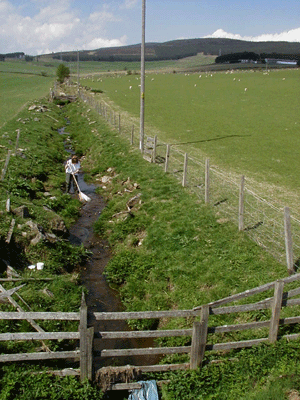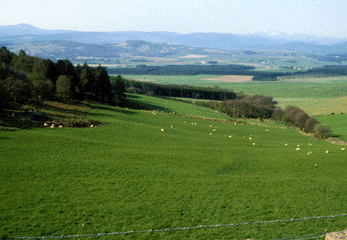The Tarland Catchment Initiative
 WORK PROGRAMME
WORK PROGRAMME
To achieve the aims of the TCI there are two elements of work. Firstly, monitoring and assessment to provide objective data and information on the status and quality of water and habitats across the catchment prior to, during and after improvements have been made. The second element of the work programme is the implementation of simple pragmatic measures that should lead to an improvement in water quality and habitat. Some more detail of each of these is provided below.
Monitoring and assessment
Continuous monitoring of water quality at the lower end of the catchment has been in place since 1999. This allows for the examination of the variation in water quality between years, seasons and over individual storms. In addition spatial surveys of water quality across the tributaries of the catchment are being undertaken. The water quality parameters measured are pH, conductivity, suspended solids, nitrogen, phosphorus and bacterial coliforms.

Photograph typical of the upper catchment areas
Habitat information will be assessed using the River Habitat Survey (RHS) approach. Ecological status of the catchment is being assessed through repeat surveys of aquatic invertebrate status (BWMP score). In addition a riparian mammal survey of the occurrence of water voles, otters and mink has been undertaken. In terms of the fisheries status the consortium has the support from both the Dee Salmon Fishery Board and the Dess and Aboyne Water Project. Through this input annual electrofishing data from across the catchment is available.
Restoration works to improve water quality and increase the diversity of the habitat has been initiated at two sites in the catchment. Further details are given on the progress page
